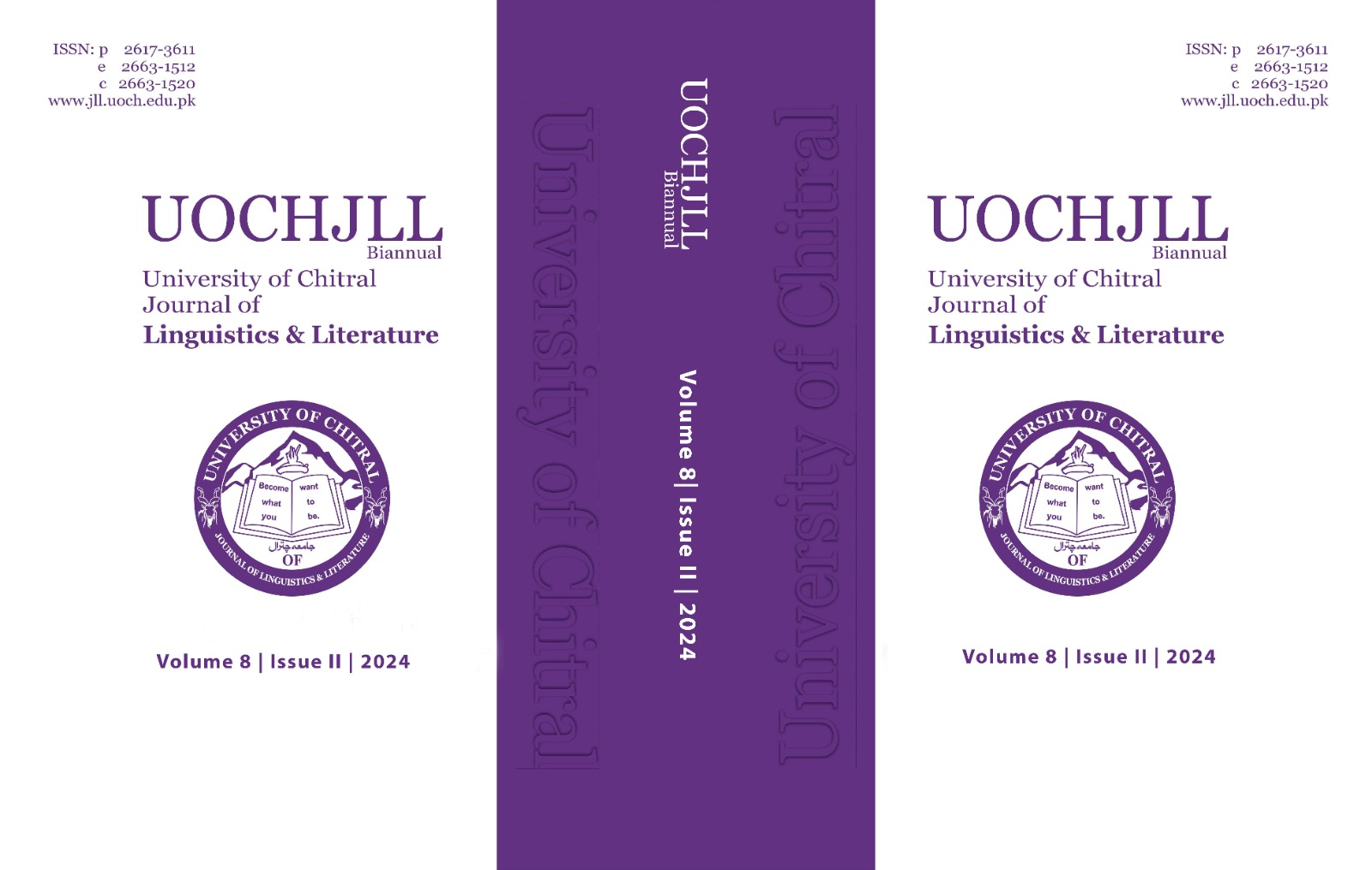Tracing Linguistic Evolution: Language Contact between English, Bengali, and Other Languages Across Three Phases in Bangladesh and its Place in World Englishes
Abstract
This article explores the historical progression of language contact in Bangladesh. It focuses on the interaction between English, Bengali, and other regional languages. The study is divided into three phases: the colonial period (1853–1947), the post-colonial period under Pakistan (1947–1971), and the post-liberation period after Bangladesh’s independence (1971 onwards). Each phase brought significant sociopolitical and cultural changes. These shifts influenced how languages interacted and shaped the linguistic landscape of the region. The article shows how these phases contributed to the rise of a localized form of English. This variety developed alongside the dominant presence of Bengali in a bilingual and multilingual environment. The study uses the framework of World Englishes to understand these changes. It highlights the unique linguistic innovations of Bangladeshi English. These features reflect the country's historical and sociolinguistic context. The article also shows how English has adapted to local needs while retaining its global significance. By integrating historical phases with the concept of World Englishes, the study captures the evolution of English in Bangladesh. It emphasizes how different periods have shaped a distinctive linguistic landscape.
References
Aktar, T. (2011). Speaking skills in the universities of Bangladesh. East West University, Dhaka.
Awasthi, S., Pandey, R., & Kafle, A. (2021). Dynamics of multilingual education policies in South Asia: A comparative analysis. International Journal of Language Policy and Education, 15(3), 245–267.
Banu, R., & Sussex, R. (2001). English in Bangladesh after independence: Dynamics of policy and practice. Journal of Asian Pacific Communication, 11(2), 197-222. https://doi.org/10.1075/japc.11.2.04ban
Chatterjee, T. (2015). Bilingualism, language contact and change: The case of Bengali and English in India (Ph.D.). University of Michigan, Michigan. Retrieved January 14, 2020, from https://deepblue.lib.umich.edu/bitstream/handle/2027.42/113302/tridha_1.pdf?sequence=1&isAllowed=y
Chowdhury, R., & Al Amin, M. (2020). Code-switching in the professional landscape: English and Bengali in Bangladesh. Bilingualism and Society, 8(1), 35–49.
Crystal, D. (2003). English as a global language (2nd ed.). Cambridge University Press.
Cutts, E. H. (1953). The background of Macaulay's minutes. The American Historical Review, 58(4), 824-853.
Dil, A. (2012). Impact of Arabic on Bengali language and culture. Journal of the Asiatic Society of Bangladesh, 57(1), 101–152.
Farooqui, S. (2014). The struggle to teach in English: A case study in Bangladesh. Journal of Education and Human Development, 3(2), 441-457.
Fathema, F. (2015). Bangladeshi EFL learners' approach towards learning English. Journal of Education and Practice, 6(30), 1-5.
Funk, R. (2014). Young adults' linguistic manipulation of English in Bangla in Bangladesh. International Journal of Bilingual Education and Bilingualism, 17(1), 74-89.
Hossain, A., & Akhter, T. (2023). Linguistic identity and localization: The rise of Bangladeshi English in World Englishes. Journal of Sociolinguistics, 27(1), 101–120.
Hossain, M. I., & Tollefson, J. W. (2007). Language policy in education in Bangladesh. In J. W. Tollefson & A. B. M. Tsui (Eds.), Language policy, culture, and identity in Asian contexts (pp. 241-257). Lawrence Erlbaum Associates.
Islam, M. (2013). English medium instruction in the private universities in Bangladesh. Indonesian Journal of Applied Linguistics, 3(1), 126-137.
Kachru, B. B. (1992). The other tongue: English across cultures (2nd ed.). University of Illinois Press.
Kashyap, A. K. (2014). Developments in the linguistic description of Indian English: State of the art. Linguistics & the Human Sciences, 9(3).
Malak, M. S. (2013). Inclusive education in Bangladesh: Are pre-service teachers ready to accept students with special educational needs in regular classes? Disability, CBR & Inclusive Development, 24(1), 56-81.
Moquit, N. (2011). Code-switching and code-mixing between Bangla and English: Undergraduate private university students in an informal setting. English Studies International Research Journal: ISSN, 2347-3479.
Rahman, A. (2007). The history and policy of English education in Bangladesh. English Education in Asia: History and Policies, 67-93.
Rahman, S., Alam, F., & Chowdhury, J. (2022). English as a tool of globalization in Bangladesh: A case study of urban language usage. Global Linguistics, 10(4), 390–405.
Rahman, T. (2009). Language policy, identity, and religion: Aspects of the civilization of the Muslims of Pakistan and North India. Chair on Quaid-i-Azam & Freedom Movement, National Institute of Pakistan Studies, Quaid-i-Azam University.
Rasheed, M. (2012). Learning English language in Bangladesh: CLT and beyond. Critical Literacy: Theories and Practices, 6(2), 31-49.
Schneider, E. W. (2007). Postcolonial English: Varieties around the world. Cambridge University Press.
Thomason, S. G. (2000). Linguistic areas and language history. Studies in Slavic and General Linguistics, 28, 311-327.
Young, R. F. (2006). English and identity in Asia. Asian Englishes, 9(2), 1-14. https://doi.org/10.1080/13488678.2006.10801178
Downloads
Published
Issue
Section
License
Copyright (c) 2025 Dr. Md. Nurul Islam, Dr. Sharif Mohammad Shahidullah (Author)

This work is licensed under a Creative Commons Attribution 4.0 International License.
You are free to:
- Share — copy and redistribute the material in any medium or format for any purpose, even commercially.
- Adapt — remix, transform, and build upon the material for any purpose, even commercially.
- The licensor cannot revoke these freedoms as long as you follow the license terms.





